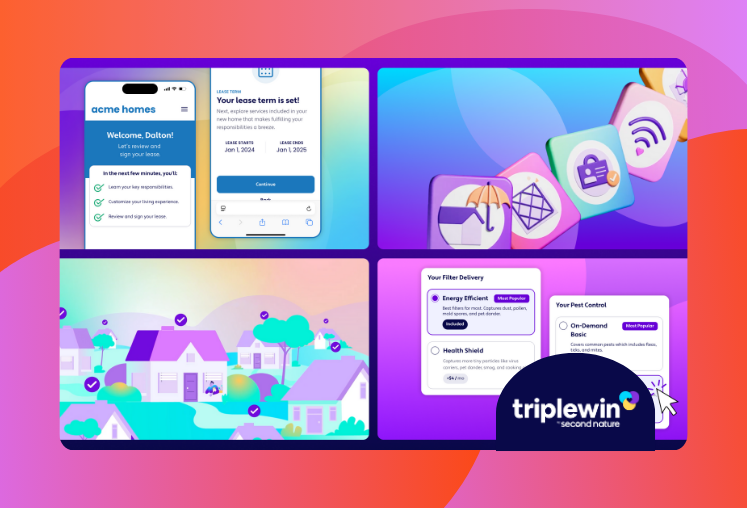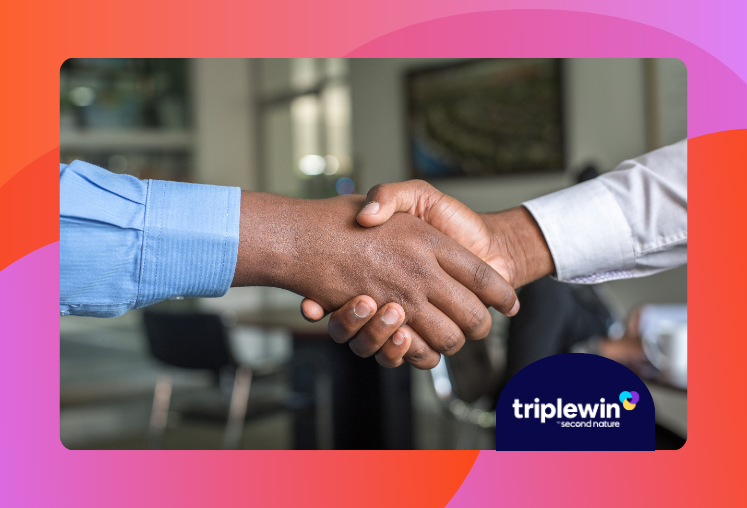The Complete Guide to Automated Rent Collection for Property Managers
Automated rent collection is a system that enables residents to pay rent online via digital and electronic means such as online portals, direct debit, ACH, direct deposit bank transfers, or debit card or credit card payments. This approach streamlines the rent collection process, saves valuable time, and reduces human errors associated with manual rent collection and payment reminders. It also offers residents a secure, convenient rent payment experience, improving both satisfaction and retention. In this guide, we'll cover: The top online rent payment systems for property managers Best practices to automate rent collection Step-by-step implementation strategies Today's Expert: Wolfgang Croskey, Founder & President of How’s My Rental What is automated rent collection? Automated rent collection leverages single-family property management software to streamline the process of receiving rent payments from residents. While traditionally rent collection might involve paper checks or manual online payments, automated rent collection automates these steps, alleviating the issue of late rent payments. Residents can schedule recurring payments or make one-time payments (or partial payments) electronically through the software, covering not only rent but also any monthly fees like utilities, pet rent, or parking. The software automatically debits the designated bank account on the due date, eliminating the need for manual processing and the potential for missed payments or late fees. Common challenges in manual rent collection Before diving into automation, it’s important to understand the inefficiencies and frustrations property managers often face with manual rent collection. While traditional methods like paper checks, cash payments, or manual bank transfers have long been standard, they come with a host of problems that can negatively impact operations and relationships between landlords and tenants. Here are five of the most common. 1. Time-consuming and labor-intensive Manually collecting rent often means making phone calls, sending reminders, processing checks, and reconciling accounts by hand. This not only takes up valuable time but also diverts attention from other critical responsibilities like maintenance coordination, inspections, and leasing. 2. Late or missed payments Without automation, residents are more likely to forget their due dates or delay payments, especially if they have to take extra steps like mailing a check or logging into a bank account. This creates inconsistent cash flow and forces property managers to spend time chasing down payments. 3. Risk of human error Manually entering and managing payment records increases the chance of errors—whether it’s misplacing a check, entering incorrect payment data, or losing track of who has paid and who hasn’t. These mistakes can lead to financial discrepancies, resident disputes, and even compliance issues. 4. Lack of transparency When payment records are scattered or incomplete, it becomes difficult to maintain clear financial documentation. This lack of transparency can affect everything from owner reporting to tax preparation and financial forecasting. 5. Strained PM-resident relationships No one enjoys awkward conversations about money. When tenants fall behind and managers have to follow up manually, it can strain relationships and lead to negative resident experiences. Automating the process, including sending automatic reminders, helps depersonalize the transaction and maintain a more professional dynamic. Key features to look for in automated rent collection tools With so many rent collection platforms available, choosing the right one can feel overwhelming. To make an informed decision, it’s essential to evaluate each solution based on the features that truly support efficiency, accuracy, and a better resident experience. Here are the must-have capabilities property managers should look for: 1. Recurring payment scheduling Residents should be able to set up automatic monthly payments with ease. This reduces the risk of late payments and improves cash flow consistency. 2. Tenant notification and reminder systems Automated alerts, such as upcoming rent due dates, payment confirmations, or failed payment notices, keep both residents and property managers informed and accountable. 3. Integration with accounting software The ability to sync with platforms like QuickBooks or property management accounting systems can eliminate redundant data entry and reduce financial errors, and simplify tracking income across your portfolio. 4. Mobile app accessibility Residents increasingly prefer mobile-first experiences. A tool that allows them to pay rent, receive alerts, and access their payment history from their smartphone enhances convenience and satisfaction. 5. Secure payment processing Look for platforms that offer bank-level encryption and PCI-compliant systems to protect sensitive financial information for both residents and property managers. 6. Tenant credit reporting capabilities Some platforms allow managers to report on-time rent payments, including credit card payments, to credit bureaus. This can be a valuable incentive for residents and a selling point for Resident Benefits Packages. Best automated rent collection apps for property managers 1. Second Nature At Second Nature, our focus is on improving the lives of both residents and property managers. That's why we've designed solutions aimed at adding value and alleviating rent collection challenges for all parties involved. With our Resident Benefits Package, we offer a range of features designed to encourage timely rental payments and assist residents in bolstering their credit, safeguarding their identity, and maintaining financial stability. Learn more now 2. AppFolio AppFolio is a cloud-based property management software that offers online rent collection, security deposit, tenant screening, property inspections, and accounting/bookkeeping software features. AppFolio's pricing structure is tiered, with the specific cost depending on the number of units you manage and the features you require. Learn more about AppFolio 3. Buildium Buildium is a property management platform that provides a range of features, including online rent payments, payment processing, resident communication, maintenance tracking, and financial reporting. While Buildium does not publicly disclose specific pricing information, its website indicates pricing is based on the number of units you manage.. Learn more about Buildium 4. Avail Avail is a cloud-based rent collection tool that allows PMs to automate rent, send rent reminders, track payments, and manage rental properties. The pricing for Avail depends on the number of units you manage, with increased discounts for larger portfolios. Learn more about Avail 5. Rentec Direct Rentec Direct is a software platform for property managers that offers features such as online rent payments, tenant screening, lease tracking, and maintenance management. Rentex Direct pricing scales with the number of units you manage, with economies of scale for larger portfolios. Learn more about Rentec Direct 6. Rentvine Rentvine is a cloud-based property management accounting solution that offers interactive portals, maintenance coordination, online rent collection, electronic lease signing, and more. A relative newcomer to the property management technology space, Rentvine is focused on providing an easy-to-use, customizable interface for both residents and property managers. Rentvine includes all features regardless of pricing tier, adjusting pricing based on your unit count. Pricing starts at $199 per month and Rentvine offers a three month free trial. Learn more about Rentvine 7. DoorLoop DoorLoop is a cloud-based solution designed to cater to a variety of property types, including single-family homes and multi-tenant buildings. It offers tools to streamline property management tasks, including marketing and leasing units, screening and managing residents, processing rent payments and managing leases, tracking maintenance requests and coordinating repairs, and generating financial reports for property owners. Pricing is tiered based on the features you require. Learn more about DoorLoop 8. YardiBreeze Yardi Breeze is a cloud-based solution offered by Yardi, a venerable company in the real estate and property management industry. The software offers features designed to streamline tasks typically encountered by landlords or property managers, including marketing and leasing vacant properties, screening and managing residents, processing rent payments and rental applications electronically, tracking maintenance requests and repairs, and generating financial reports for owners and real estate investors. For quotes, contact Yardi Breeze directly. Learn more about YardiBreeze 9. RentRedi RentRedi is a mobile-first property management software that allows landlords to collect rent payments online, screen tenants, and manage maintenance requests through a user-friendly app. RentRedi’s pricing structure is subscription-based and ranges from $12/month (paid annually) to 29.95/month (pay-as-you-go). Learn more about RentRedi Benefits of automated online rent collection Rent collection software offers a variety of benefits that are specific to SFR property management companies. After all, the impact of reducing workload and saving time adds up, especially when you need to devote so much of your energy to operations across a dispersed area. Here's a closer look at the advantages: Reduced workload and time savings Automating rent collection eliminates the need to chase individual payments, freeing up time for tasks that can be time-consuming, such as inspections or maintenance coordination. Fewer late payments With on-time automated payments, rental income (and therefore cash flow) becomes more predictable. This allows for better financial planning and budgeting for property maintenance, repairs, or unexpected expenses. Simplified accounting and record-keeping For property managers, autopay eliminates the need for manual rent collection processes and reduces the risk of late notifications or missed payments. Rent collection features also help streamline accounting processes by providing accurate and up-to-date records of rent payments and other business transactions. And of course, recurring payments can be set up to occur automatically, saving property managers time and reducing the need for follow-up with tenants. No more existential dread around rent time! Reduced risk of errors Manual processing of checks or cash can be error-prone. Automatic rent collection minimizes the risk of human error in recording payments, ensuring accurate financial records and avoiding potential miscommunications or disputes. Improved security Automated rent collection platforms typically use secure payment processing systems to safeguard sensitive financial information. This provides peace of mind for property managers and residents alike, as their payment data is protected from unauthorized access or fraud during online transactions. Potential for scalability Even for smaller companies managing a few properties, automated rent collection lays a foundation for a more efficient system. As your portfolio grows, the automation remains in place, simplifying rent collection regardless of the number of properties you manage. In fact, Wolfgang Croskey says automation can level the playing field. “Technology is the great equalizer,” he says. “It allows us to compete with these nationwide companies and to provide not only the same level of service but to be able to pivot and adapt much quicker than those larger companies can. So for me, you're a smaller company, AI and Automation Tech is that equalizer that's going to allow you to shine just as well as these larger companies.” Related: 12 Tasks for Property Management Automation Enhanced resident communication and satisfaction For residents, recurring rent payments provide a convenient and hassle-free way to pay rent on time every month. It eliminates the need to remember to make a payment, reducing the risk of late fees and improving their credit score by building a consistent payment history. Property managers who are reporting rent payments to credit bureaus (such as TransUnion) as part of a Resident Benefits Package can use this as a massive incentive for residents to automate payments. Additionally, tenants can set up recurring payment options using their preferred payment method, making it easy and flexible for them to manage their finances. The other component of improving the resident experience is offering mobile app-based automatic payment methods. That’s why allowing residents to pay rent with Apple Pay or Google Pay is gaining popularity across the property management industry. Zelle is another payment service that can help with ACH payments without transaction fees. PayPal and Venmo are other mobile payment platforms. With these mobile payment apps, renters can pay their rent using their mobile devices. It’s a win for residents because they can easily make automatic payments on the go using their smartphones without the need for a physical wallet or a business day visit to a bank or property management office. Additionally, these mobile payment methods are highly secure, as they use biometric authentication to ensure the transaction is authorized by the account owner, minimizing the risk of fraud and identity theft. It’s important to note that some property management companies have experienced the rare but profoundly irritating (and costly) phenomenon of chargeback claims in relation to rental payments made by credit card. If you’re in the market for software that supports automated rent payments, this is an important issue that you should raise with the sales representative. Tips for successful adoption Even the best rent collection software isn’t plug-and-play. Implementation can come with speed bumps, especially when transitioning residents or staff from manual systems. Here’s how to avoid common pitfalls and ensure a smooth rollout of your automated rent collection process. 1. Anticipate and address resident hesitation Not all residents will be eager to switch from checks or manual transfers to an automated system. Be ready to communicate the benefits clearly—like convenience, reduced late fees, and potential credit-building—and provide step-by-step guidance for setup. Some managers offer small incentives (like gift cards or waived fees) to encourage adoption. 2. Validate resident data before launch Ensure that resident names, bank details, lease terms, and payment schedules are entered correctly into the software before enabling automation. A few minutes of verification upfront can prevent hours of frustration later on. 3. Offer training and support resources While most modern rent collection tools are user-friendly, not every resident or staff member is tech-savvy. Provide tutorials, FAQ sheets, or one-on-one assistance during the initial rollout. A smooth onboarding experience increases trust and usage. 4. Monitor payment activity closely at first Keep a close eye on payments during the first one to two billing cycles. Look for missed transactions, failed payments, or incorrect amounts, and address them immediately. Early intervention helps prevent long-term issues. 5. Prepare a backup process Even with automation, things can occasionally go wrong. A resident’s bank account may change, or a software update could cause a glitch. Have a manual backup process ready (such as an alternate payment portal or temporary paper payment option) to keep operations running without disruption. Use Second Nature to automate rent collection At Second Nature, our mission is to create a Triple Win for residents, property owners, and property managers, adding value and reducing headaches for everyone involved. Our Resident Benefits Package provides services that incentivize on-time rent payments and support residents in building credit, protecting their identity, and remaining financially sound. Ready to streamline rent collection and get automatic rent payments? Contact us today to schedule a free demo!
 June 16, 2025
June 16, 2025
Read more

October 15, 2025



















